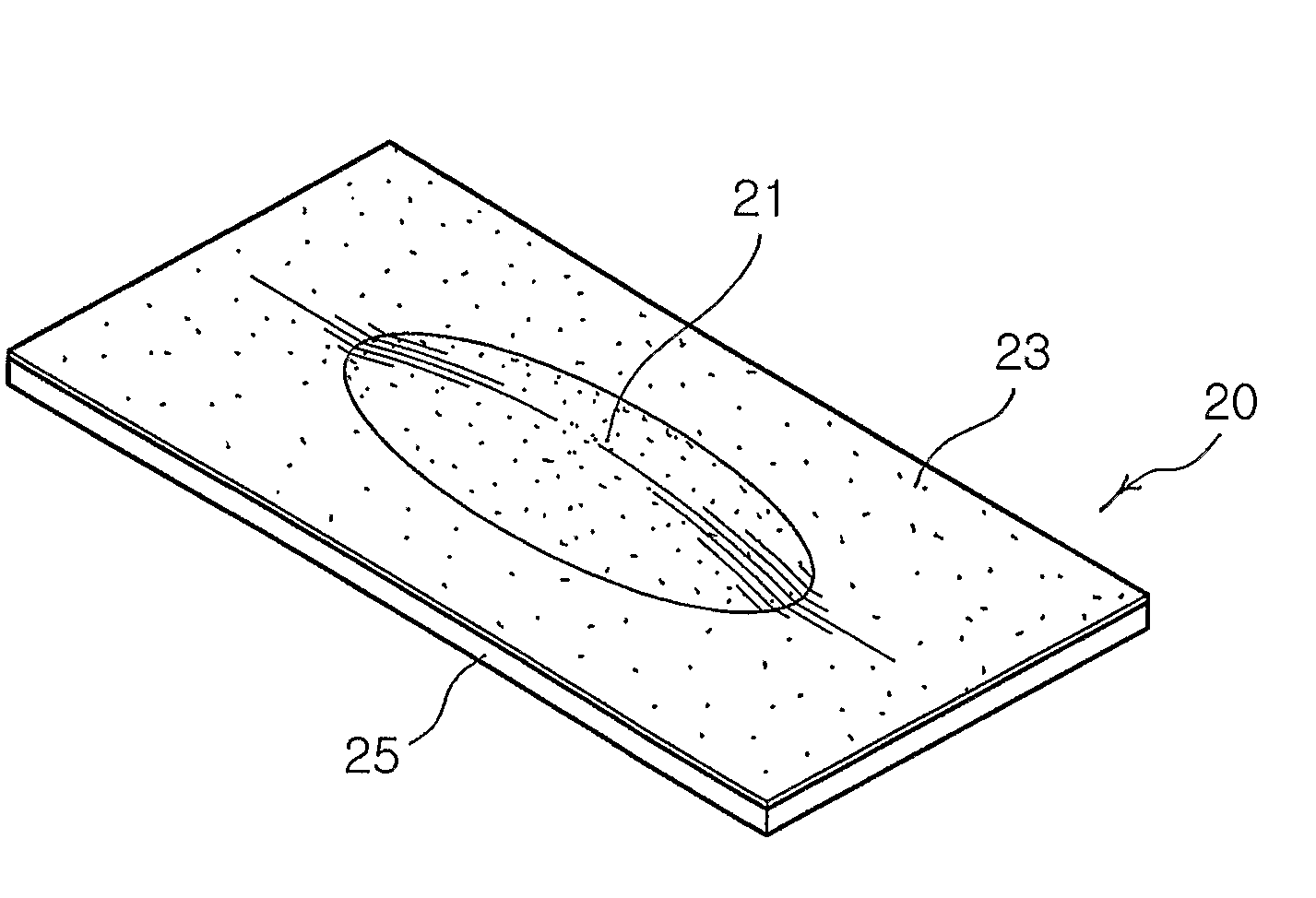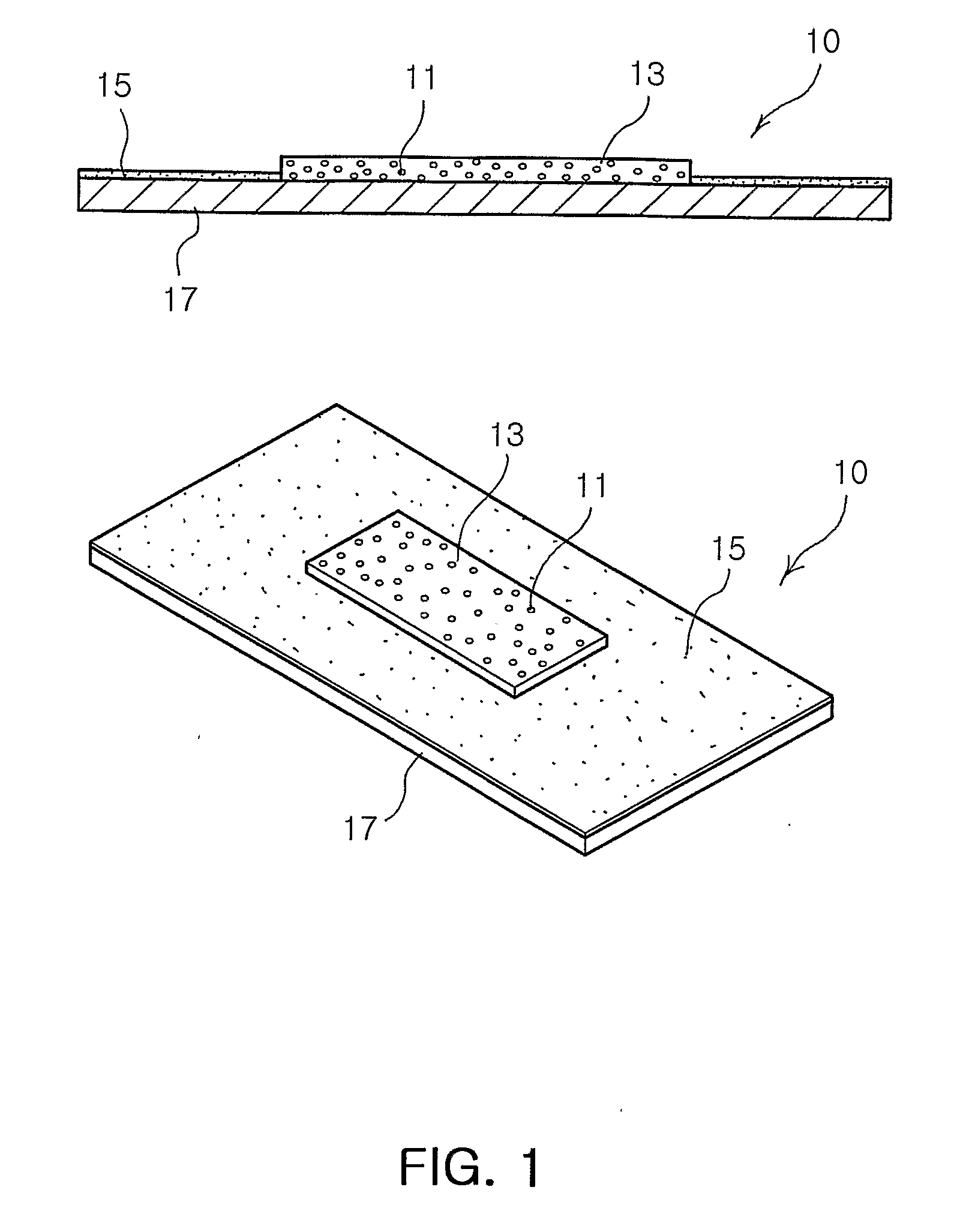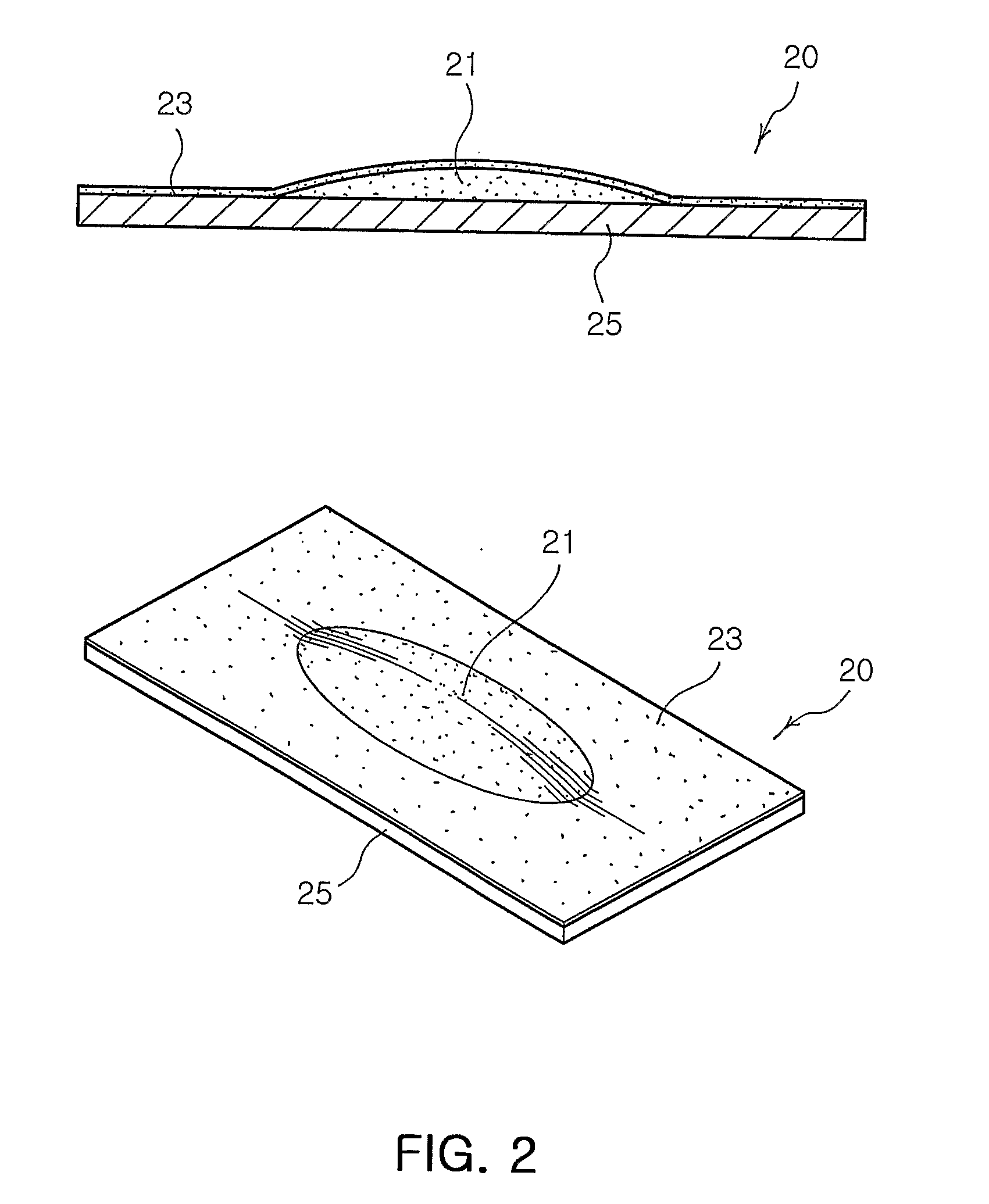Methods for producing silver-bonded antimicrobial moist wound dressings and moist wound dressings produced by the methods
a silver-bonded, moist wound technology, applied in the direction of biocide, bandages, dressings, etc., can solve the problems of affecting the healing effect of wounds, and impeding the inherent function of wounds, so as to shorten the treatment period, and improve the effect of healing
- Summary
- Abstract
- Description
- Claims
- Application Information
AI Technical Summary
Benefits of technology
Problems solved by technology
Method used
Image
Examples
examples
[0066]The present invention will now be described in more detail with reference to the following examples. However, these examples are not intended to limit the present invention.
examples 1 to 8
Preparative Examples 1 to 8
[0067]AgCl was dissolved in 25 ml of ammonia water to dissociate silver ions. At this time, the concentrations of the silver-containing compound were adjusted to 0.00001% (w / v), 0.001% (w / v), 0.1% (w / v), 0.5% (w / v), 1% (w / v), 2% (w / v), 3% (w / v) and 6.0% (w / v) (Preparative Examples 1 to 8, respectively), and the concentrations of the ammonium hydroxide were adjusted to 0.1%, 1.0%, 5.0%, 10.0%, 15.0%, 20.0%, 25.0% and 30% (Preparative Examples 1 to 8, respectively). 0.1 g, 0.2 g, 0.3 g, 0.5 g, 1.0 g, 2.5 g, 5.0 g and 10.0 g of solid CMC (Preparative Examples 1 to 8, respectively) were weighed and dissolved in 5 ml of ethanol to prepare solutions.
[0068]Each of the silver ion-containing solutions was mixed and reacted with each of the CMC solutions to produce silver-CMC compounds. Each of the silver-CMC compounds was poured into a pure cotton non-woven fabric sheet (size: 10 cm×10 cm, weight: 180 g, thickness: 1 mm) to absorb the compound in the sheet, and dri...
example 1
[0069]To evaluate the antimicrobial activity of the antimicrobial moist wound dressing produced in Preparative Example 4, a test for the antimicrobial activity was conducted on the antimicrobial moist wound dressing by the AATCC 147-1998 test method (HALO test) in the Korea FITI Testing & Research Institute. As the test strains, Staphylococcus aureus (ATCC 6538) and Klepsiella pneumoniae (ATCC 4352) were used. The test results for the antimicrobial activity of the antimicrobial moist wound dressing are shown in FIGS. 3a and 3b. As can be seen from the photographs of FIGS. 3a and 3b, no proliferation of the bacteria was observed at the back surface of the test samples, which demonstrates that the wound dressing of the present invention has superior antimicrobial activity.
PUM
| Property | Measurement | Unit |
|---|---|---|
| temperature | aaaaa | aaaaa |
| time | aaaaa | aaaaa |
| temperature | aaaaa | aaaaa |
Abstract
Description
Claims
Application Information
 Login to View More
Login to View More - R&D
- Intellectual Property
- Life Sciences
- Materials
- Tech Scout
- Unparalleled Data Quality
- Higher Quality Content
- 60% Fewer Hallucinations
Browse by: Latest US Patents, China's latest patents, Technical Efficacy Thesaurus, Application Domain, Technology Topic, Popular Technical Reports.
© 2025 PatSnap. All rights reserved.Legal|Privacy policy|Modern Slavery Act Transparency Statement|Sitemap|About US| Contact US: help@patsnap.com



